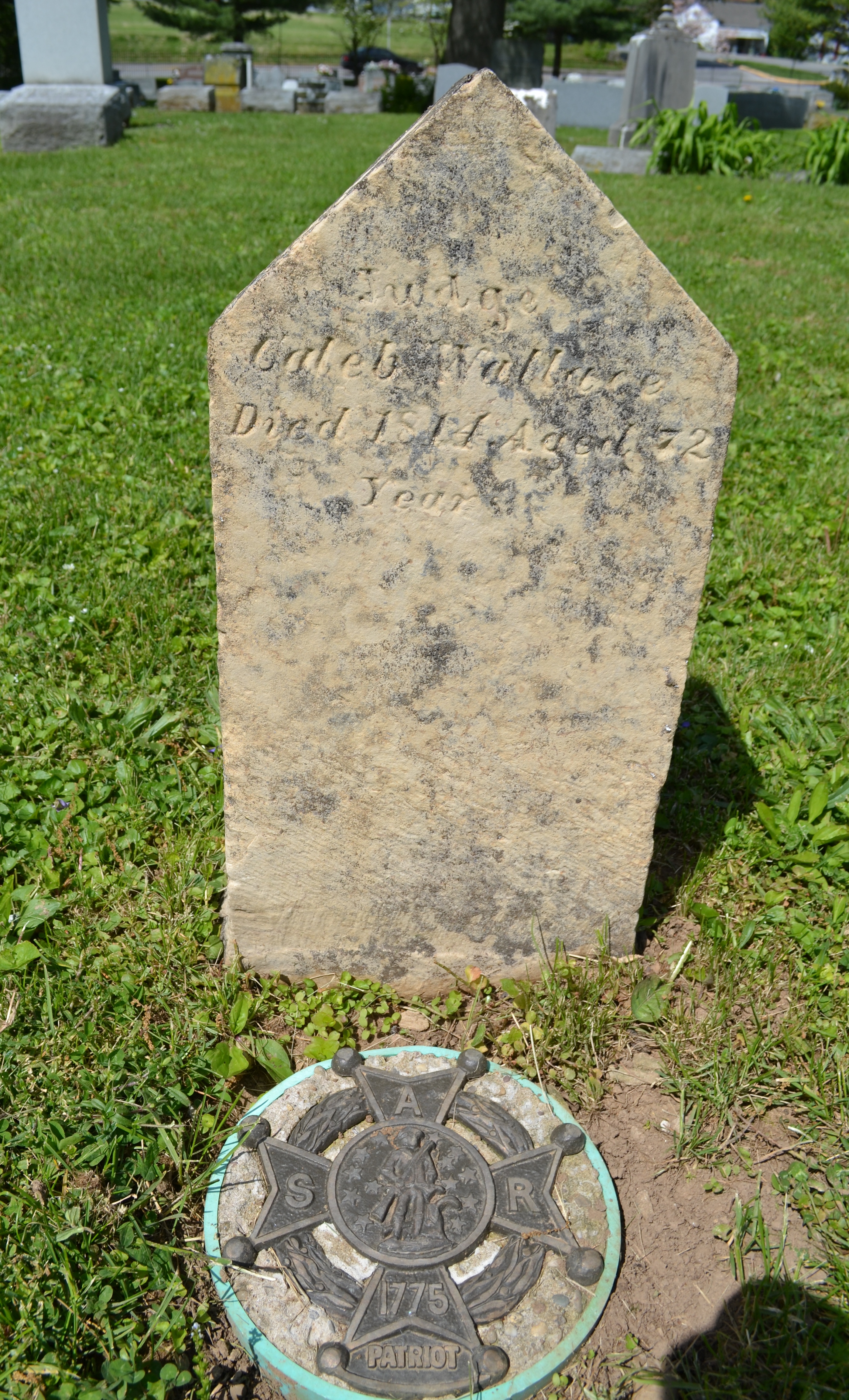Caleb WALLACE
SAR Patriot #:
P-312544
The following information was assembled from numerous sources and cannot be used directly as proof of Qualifying Service or Lineage.
It is considered a research aid and is intended to assist in locating sources that can be used as proof.
State of Service: VA
Qualifying Service: Patriotic Service / Civil Service
DAR #: A119873
Birth: 1742 / Augusta / VA
Death: 1814 Midway / Woodford / KY
Qualifying Service Description:
- Deputy to the VA General Assembly
- Judge, District of KY
- DAR cites
- DEPUTY TO VA GEN ASSEMBLY FROM PRESBYTERY OF HANOVER
- SERVED AS JUDGE IN DIST OF KENTUCKY
Additional References:
- Summers, Annals of SW VA, 1769-1800, Vol 1, pg 318
- SAR Patriot Index Edition III (CD: PP2210, Progeny Publ, 2002) plus data to 2004
- Whitsit & Morton, Life and Times of Judge Caleb Wallace, Louisville, 1888
- DAR cites
- AILSWORTH, CHARLOTTE CO: RICH INDEED, pg 134
- PALMER, CALENDAR OF VA STATE PAPERS, VOL 3, pg 523
Spouse: (1) Sarah McDowell; (2) Rosanna Christian; (3) Mary XX Brown
Children: William Christian Wallace; Priscilla Christian Wallace; Henry; Samuel McDowell; William
Members Who Share This Ancestor
| Date Approved | Society | ACN | SAR Member Info | Lineage via Child | View Application Detail | |
|---|---|---|---|---|---|---|
| 1996-10-31 | AR | 202703 | Dennis Erroll Boyer (147252) | William | ||
| 2005-06-06 | AR | 22863 | David Mark Boyer (165065) | William | ||
| 2005-06-23 | KS | 22864 | John Michael Boyer (165189) | William | ||
| 2008-08-08 | DC | 32492 | Donald Robert DePriest (172228) | Samuel | ||
| 2012-06-28 | AR | 48696 | Andrew William Price (184009) | William | ||
| 2012-06-28 | AR | 48697 | Alan Michael Price (184010) | William | ||
| 2014-07-31 | AR | 59806 | Frank William Boyer (191761) | William | ||
| 2015-08-26 | KY | 65846 | Wallace Penn Dunlop Scott (196116) | Samuel | ||
| 2021-04-23 | TN | 93959 | James Alan Sandman (204600) | Priscilla |
Burial:
Location:
Versailles / Woodford / KY / USA
Find A Grave Cemetery #:
Grave Plot #:
207 Sect. A-1 N Block 4
Grave GPS Coordinates:
Find A Grave Memorial #:
Marker Type:
SAR
SAR Grave Dedication Date:
May 2009
Comments:
Inscription: Judge Caleb Wallace Died 1814 Aged 72 Years
Directions to Cemetery / Gravesite:
Main Cemetery Gate is located on South Main St., there is a smaller side gate entrance where the office is located at 251 S. Locust St.

